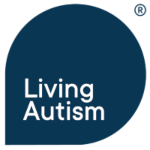This article offers helpful tips for creating an environment conducive to sleep for autistic children.

The beginning of school is a time notorious for upending lax sleep schedules and reinstituting new elements of structure. However, for autistic children, sleep can be hard enough to come by without adding routine changes to the mix. According to Autism Speaks, as many as 80 percent of children with autism have sleep problems such as having a hard time falling and staying asleep. Lack of sleep can cause sleepiness during the day, as well as behavioral and learning problems. There’s no one-size-fits-all plan for helping your child enjoy more restful sleep, but the following tips from Living Autism are definitely worth trying.
Take the Senses Into Account
Autistic children have a heightened sense of awareness of their environment, and this includes how things feel. Consider the textures that could be impacting your child’s ability to fall asleep. For example, your child might prefer their feet to be covered with socks, footed pajamas, or the covers, or perhaps the elastic band on the pajama bottoms is a source of discomfort and aggravation.
The bedding and mattress itself should be a source of comfort as well. Warm fall nights can make it hard for your child to fall asleep, especially if they’re a hot sleeper. Take a look at the mattress options available, and consider these factors when reading mattress reviews: sleep position, pain, breathability, and heat conductivity/retention. A breathable mattress with moisture-wicking material will allow air to flow in and out of the mattress, and away from your child, creating a cooling effect. You might also make other bedroom changes such as blocking out distracting light with blinds/curtains or using low, white noise such as a fan.
Set Them Up for Sleep Success
Children with autism have a hard time staying asleep, and when they wake up multiple times during the night, they might find their way into your room. Especially if you’ve been more lenient during the summertime. But it is important that you establish and reinforce a regular bedtime routine (more on this below).
Make their room extra comfy and cozy with favorite toys and blankets. When your child wakes in the middle of the night, they may be experiencing anxiety knowing that you aren’t there, but a weighted blanket has been shown to be a soothing tool for autistic children. Be sure to also use blackout curtains, and consider using a smart speaker to help provide just enough white noise.
Many parents have found success with bedtime passes as well. Laminate a card that your child can use if not seeing you becomes too much. However, should your child make it through the night without using a pass, offer a reward.
Establish a Routine
Autistic children tend to thrive on a regular routine, and bedtime is no different. Opt for relaxing bedtime rituals that promote a sense of calm such as structured, seated playtime followed by a bath with soothing essential oils and a bedtime story. As you repeat the routine, eventually your child will begin to recognize the signs that it’s time to start winding down and get ready for bed. However, your child’s needs and preferences will change, and so should your routine. If brushing their teeth suddenly becomes a battle, try doing it right after the last meal so that it doesn’t interfere with the rest of the routine. Above all else, ask your child for suggestions. Perhaps they would prefer certain items hidden at nighttime due to the shadow it creates or would really enjoy a soothing back rub as they drift off to sleep.
Don’t let the start of the school year disrupt your child’s sleep. Autistic children are predisposed to sleep problems, so it is important that you create a home environment that is conducive to sleep. By making the bedroom more comfortable, reinforcing bedtime rules, and establishing a routine, you can help your child get the restful sleep they need.
Editor’s note
Our readers might also be interested in reading the article in the link below – How to create a safe space at night for your child
https://www.happybeds.co.uk/blog/autism-bedroom-design-create-safe-space-night-child
______________________________
If you need support in getting a specialist independent placement for an autistic child or young adult, we can help. Click below for our Autism Schools and Colleges Placement Support Service.



